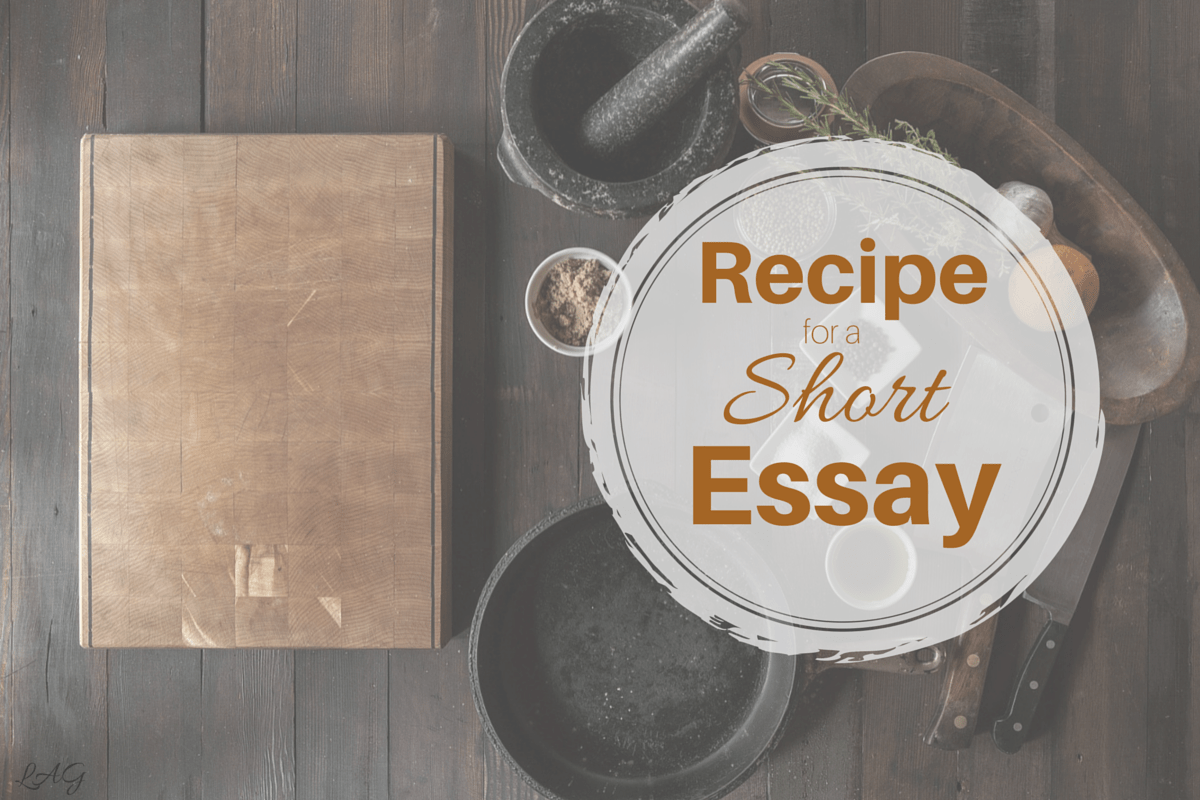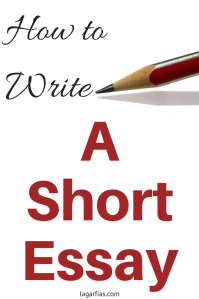
Be sure to scroll down for your FREE DOWNLOAD!
Essay questions seem so difficult. While it seems fairly straightforward to prepare for short answer, multiple choice, or even true/false test questions, the essay portion of any test seems daunting. What magical words does the teacher want? How does one even know if an essay is good or not?
It took me years to get over that intimidating feeling, so I completely sympathize with you. Actually, it wasn’t until I began writing professionally that I stumbled upon the secret recipe for essay success.
A good essay is simply a well-written paragraph. That is all.
In case you don’t believe me, let me share with you the magical, secret recipe for a short essay. Feel free to use this recipe on every test in every subject you take and get 100% on all your essays from here out. You are very welcome.
WORD OF WARNING: This recipe will only work if you have a clue what your topic is about. You cannot fluff your way through an essay successfully.
 Surprising fact: Most teachers want you to write a good essay. It makes their grading so much easier, and no teacher enjoys grading a bad essay. That takes a long time and makes them very cranky. So teachers really want you to write a good essay so they can just write GREAT JOB on your paper and go back to reading their really funny book and drinking coffee.
Surprising fact: Most teachers want you to write a good essay. It makes their grading so much easier, and no teacher enjoys grading a bad essay. That takes a long time and makes them very cranky. So teachers really want you to write a good essay so they can just write GREAT JOB on your paper and go back to reading their really funny book and drinking coffee.
So ask your teacher before the test what possible essay topics may include. Your teacher may even tell you ahead of time what the essay question will be! Now, you have all the tools you need to get 100% on your test!
Recipe for a Winning (Short) Essay
Most essays fall into three categories:
- Short essay – around five sentences explaining a rather simple topic.
- Super-short essay – two or three sentences explaining or defining a simple term.
- Long essay – multiple paragraphs on a complex subject, perhaps comparing or contrasting themes or proving or disproving an opinion.
Today, we’ll be discussing a short essay. These are commonly encountered on student tests from junior high through college in nearly every subject. Once you master this recipe, the super-short and long essays are much easier to handle.
Ingredients
1 question from your teacher
1 answer to the teacher’s question
3 reasons that answer is true
Directions
1. Read the question carefully.
Then read it again. And again. This is the single-most important part of your process. You need to be sure to answer the right question, or all hope is lost. Underline important words like compare or constrast or define or explain. That is how your teacher tells you what is the key to winning.
Example: Let’s use a sample essay question for practice. “Is it a good idea to drink coffee?”
2. Answer the question in one complete sentence.
If you have prepared well for the test, you should have a good idea what the answer is and find it easy to give a quick answer. Make that your topic sentence. It should just be a straight-forward answer with nothing fancy.
Example: “Drinking coffee daily is always a good idea.” I could have said even more simply, “It is a good idea to drink coffee.” That would have been fine. I feel a little more strongly about this topic, though, so I decided to tell my teacher so with a more emphatic topic sentence.
3. Write the three reasons that answer is true.
Each reason should be stated in it’s own complete sentence. That means every sentence should be a new reason that directly relates to the answer to the question. Be careful not to get excited and start talking about something else instead.
Example: “The caffeine in coffee gives one extra energy to meet the demands of the day. Coffee is a warm beverage, which is comforting to the body early in the morning. There are many different flavors of coffee, so each morning can start with a delicious treat.”
Notice I refrained from mentioning my favorite coffee brands, what kind of creamer to buy, and how many k-cups are in my pantry. None of those are helpful to the short essay reasons.
4. Summarize your answer.
Finally, write a closing sentence to end the essay. Your closing sentence could either restate the topic sentence (simply answer the question again) or summarize your reasons to bring the paragraph to a close.
Example: You could use either ending. “Coffee is a good way to start the day. ” That is a restating closing sentence. For a summarizing closing sentence, you could say, “Warmth, caffeine, and delicious flavors make coffee a great way to begin your day.”
5. Edit and polish.
Now it’s time to check it. Make sure they are all complete sentences, they all answer the question, and they don’t include grammatical or spelling mistakes. If you repeat a word, find good synonyms. Then go back and add some extra transition words like next and finally to pull the paragraph together.
Example: Drinking coffee daily is always a good idea. The caffeine in coffee gives one extra energy to meet the demands of the day. Also, coffee is a warm beverage, which is comforting to the body early in the morning. Since there are many different flavors of coffee, each morning can start with a delicious treat. This is why coffee is a great way to begin the day.
To make a super-short essay, follow this same recipe but use two reasons and omit the closing. That makes it just a one sentence answer and two reasons, and you’re done.
To make a long essay, you develop an outline of topic, reason one, reason two, reason three, and conclusion. Each of those points are developed into a complete paragraph.
Get the Recipe Printable FREE!
[googleapps domain=”docs” dir=”forms/d/1JbRF4oe4VHCEHhGb8EBwZO0eYDXbPCGZf5jkhXbGaY4/viewform” query=”embedded=true” width=”800″ height=”600″ /]
For more homeschool help, check out my new book Homeschool Made Easy, now available on Kindle. Get your copy today!



Leave a Reply